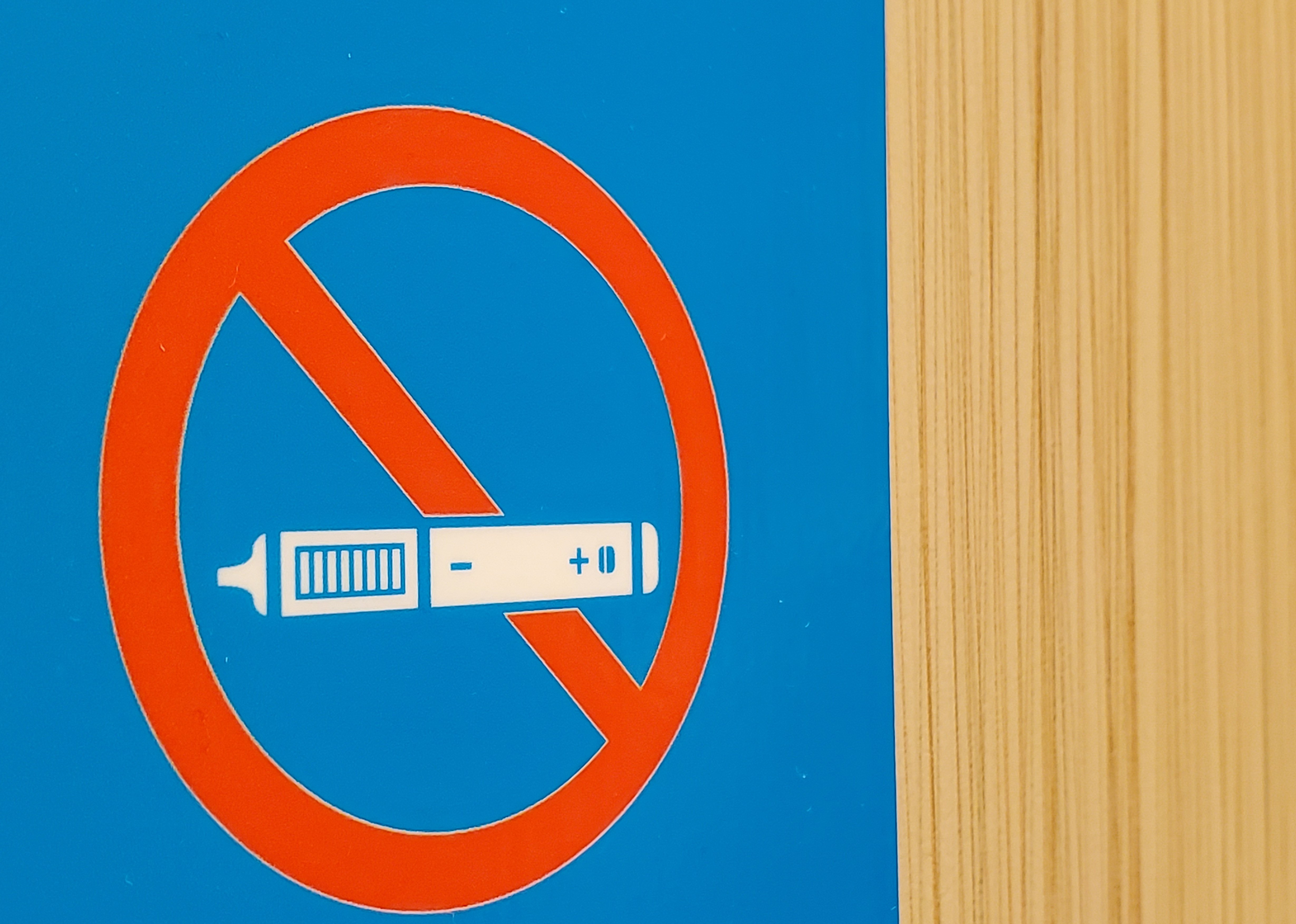
Politics & Society
Big tobacco vs Australia’s plain packaging

E-cigarettes have clearly made their way into Australian society. So, what’s the problem? Well, for a start, there’s a lot misinformation about them
Published 23 September 2020
According to reports this week, Australia’s Therapeutic Goods Administration (TGA) has made an interim decision that nicotine-based e-cigarettes will be available for people to buy at chemists, provided they have a script from their doctor indicating that use is for smoking cessation purposes.
The final decision is expected toward the end of the year.
The impact of this decision on rates of e-cigarette use and public health will be closely watched, but one thing is for certain, electronic cigarettes (or e-cigarettes) have grown rapidly in popularity around the world.

In Australia, data from the National Drug Strategy Household Survey indicates a significant increase in use of the devices over the last six years.
Concerningly, it isn’t just adult smokers using e-cigarettes: rates of use have also increased significantly among non-smokers and adolescents.
E-cigarettes have clearly made their way into Australian society. So, what’s the problem?

Politics & Society
Big tobacco vs Australia’s plain packaging
Well, consumers have a right to know about the products they are buying. Be it cereal, yoghurt, bread, or alcohol (just to name a few), we need to be adequately informed about what we are consuming.
Unfortunately, misinformation about e-cigarettes is widespread. It’s time to set the record straight.
So, let’s debunk the myths about e-cigarettes and separate fact from industry-written fiction.
FACT: Although marketed as a healthier alternative to traditional cigarettes, e-cigarettes are not harmless.

They have been found to contain a number of substances known to be harmful to people including formaldehyde, tobacco-specific nitrosamines, nicotine, and heavy metals.
Unsurprisingly, there are significant health risks associated with the use of e-cigarettes. Short-term consequences of use have been known for quite some time and include elevated heart rate, elevated diastolic blood pressure and respiratory symptoms.
Data on the long-term health consequences of e-cigarette use is beginning to emerge, with studies linking use with cell death, reduced lung function, stiffness of the arteries and increased risk of cardiovascular disease.
FACT: The statistic that e-cigarettes are 95 per cent less harmful than tobacco cigarettes comes from a very dated research paper published in 2014.
The paper was based on the discussions held by a group of researchers who attended a meeting together in July the previous year. Despite the authors of the paper noting that they lacked hard evidence to support the 95 per cent statistic, it continues to be publicised and used in defence of e-cigarettes more than seven years later.
This is highly problematic.

If the “factoid” was unreliable and lacked evidence back in 2013 then it is most certainly invalid today given the emergence in recent years of conclusive evidence documenting the substantial harms associated with e-cigarette use.
In addition, the e-cigarette products available today are vastly different from those available in 2013, making it irresponsible to claim that the current devices on the market are safer than tobacco cigarettes.
Finally, most of the researchers attending the meeting where the statistic was created were supporters of e-cigarettes and some were funded by an organisation with links to the tobacco industry.
We simply cannot trust the words of people with a vested interest.

Health & Medicine
Nothing plain about plain packaging
FACT: There is inconclusive evidence of the efficacy of e-cigarettes as quit smoking aids, with mixed findings reported in the literature.
In addition, there is evidence to suggest that: 1. Exposure to e-cigarettes significantly increases smokers’ desire and urge to smoke tobacco cigarettes
2. E-cigarette use may be associated with cigarette smoking relapse/a return to smoking among former smokers
3. Dual use of e-cigarettes and tobacco cigarettes is common among smokers.
This evidence indicates that e-cigarettes may serve to compromise quit attempts.

Finally, any product that is considered ‘therapeutic’ must be approved as such by the TGA.
The TGA rigorously and independently tests all products before they are sold to the public as therapeutic goods.
It is important to note that the decision to allow e-cigarettes to be sold at chemists (provided the purchaser has a prescription from their doctor) is an interim one and e-cigarettes have yet to be tested by the TGA.
It is also important that we are not persuaded by anecdotal reports of individuals quitting smoking with the aid of e-cigarettes.

Health & Medicine
The long-term benefits of controlling your asthma
We must assess the net costs and benefits of e-cigarette use at the population-level. To date, this assessment indicates that e-cigarette use contributes to more population-level harms than benefits.
FACT: There is consistent and compelling evidence indicating that e-cigarette use acts as a gateway to tobacco smoking, with multiple studies linking e-cigarette use among adolescents and young adults who have never smoked to subsequent initiation of tobacco cigarette smoking.
Proponents of e-cigarettes often criticise this evidence, claiming that: 1. Smoking rates in adolescents are decreasing
2. Those who use e-cigarettes and then take up smoking were always going to smoke, but they just happened to start using e-cigarettes first (i.e., the common liability theory).
3. It’s implausible for experimental e-cigarette use to lead to tobacco smoking.
These claims, like much of those made by e-cigarette advocates, have been debunked.

FACT: The vaping and tobacco industries need a new population of individuals to become addicted to nicotine to drive their profits.
The increasing use of e-cigarettes among adolescents and non-smokers speaks to the vaping industry’s continued targeting of these population segments via the development of new youth-oriented e-juice flavours (like bubblegum, popcorn, Red Bull, fruit loops, Skittles, unicorn milk).

Health & Medicine
Caught! The cell behind a lung cancer
The industry also uses appealing e-juice packaging (cartoons on labels or e-juice boxes that resemble fruit juice cartons), and develops e-cigarettes that resemble USB drives, asthma inhalers, pens, remote controls, and hoodie drawstrings (thus promoting ‘stealth vaping’).
It has also built up sponsorship of youth-oriented events.
On top of this, there’s research to suggest that ads for e-cigarettes feature themes (including the expression of identity, friendship, sex and the attainment of social status) and use techniques (like animation, cartoons or attractive and young protagonists) that have known appeal to youth.
These are the same techniques used by the tobacco industry in the 1960’s – and history has shown us how that turned out.

FACT: The vaping/tobacco industries claim they want to be “socially responsible” and create “a smoke-free world”.
Leaked internal strategy documents from one of the biggest tobacco companies in the world, Philip Morris International, suggest otherwise. These documents state that to ensure its corporate survival into the future, Philip Morris International needs to achieve two primary objectives: “shape public opinion” and “play the political game”.

Health & Medicine
The unhealthy habits killing Australian women
Make no mistake: The creation of foundations that are supposedly working toward a smoke-free future is a political game and a guise to shape public opinion.
As part of this guise, the vaping/tobacco industries hijack behavioural science by funding “independent” research and burying conflicts of interest at the end of a report or article.
That’s assuming they allow their research to be subject to peer-review.
Don’t be fooled. Financing “independent” research is a means by which industry promotes their own agenda – it legitimises their activities and enhances their credibility.
E-cigarettes are part of Big Tobacco’s product diversification strategy to deliver new and novel nicotine delivery devices, especially those that have maximum appeal to young people.

Ultimately, the goal of the vaping/tobacco industries is the maximisation of sales and profits, which is contradictory to their harm reduction mandate.
If the vaping and tobacco industries’ goal was to genuinely support smokers to quit and exit the market altogether, with no uptake by non-smokers, both industries would cease to exist within the next few decades.
FACT: Australia has always been, and remains, a worldwide leader in tobacco control. We are continuing to pave the way by implementing effective, evidence-based policies.

Health & Medicine
Can’t give it up: The science behind addiction and the brain
It is imperative that we adopt an evidence-based approach when it comes to e-cigarettes as these devices have the potential to undermine decades of effective tobacco control efforts that have produced a substantial decrease in the prevalence of smoking.
The lack of regulation in countries like the United States has led to what has been labelled an ‘epidemic’ of use, especially among adolescents. The US is frantically trying to close the gate well after the horse has bolted.
Australia needs to ensure our gate remains closed unless clear evidence emerges to suggest it is in the interest of population health to open the gate.
The authors of this article have no conflicts to declare.
Banner: Getty Images